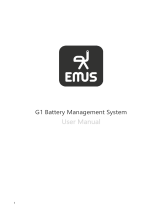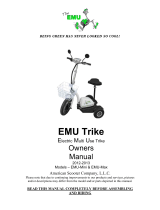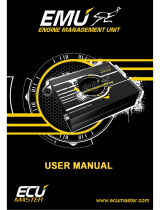
Table of Contents
1 Safety
1.1 Important provisions for all products 5
1.2 Correct use of all products 6
1.3 Personnel and organizational requirements 7
1.4 Safety regulations for initial start-up and
operation 8
1.5 Safety regulations for startup and operation,
specific information for gaseous fuel or dual
fuel supply applications 10
1.6 Safety regulations for maintenance and
repair work 12
1.7 Safety regulations for maintenance and
servicing work, specific information for
gaseous fuel and dual fuel supply or
applications
16
1.8 Fire prevention and environmental
protection, fluids and lubricants, indirect
materials 17
1.9 Fire prevention and environmental
protection, fluids and lubricants, auxiliary
materials, specific information for gaseous
fuel supply in gaseous-fuel or dual-fuel
applications
19
1.10 Standards for safety notices in the text 20
2 Transport
2.1 Transport 21
3 Product Summary
3.1 Engine – Overview 22
3.2 Engine side and cylinder designations 24
3.3 Engine – Main dimensions 25
3.4 Firing order 26
3.5 Technical Data 27
3.5.1 20V 4000 L62 engine data, fuel-optimized (TA-
Luft) 27
3.5.2 20V 4000 L62 engine data, emissions-
optimized (1/2 TA-Luft) 31
3.6 Monitoring, Control and Regulation
Equipment 35
3.6.1 Gas engine phase 3 system – Overview 35
3.6.2 Control cabinet MIS – Overview 37
3.6.3 Purpose of the units 38
4 Operation
4.1 Runtimes at partial load 42
4.2 Putting the engine into operation after
extended out-of-service periods (>3 months) 43
4.3 Putting the engine into operation after
scheduled out-of-service-period 44
4.4 Control, starting and stopping sequences 45
4.5 Engine – Start 47
4.6 Operational checks 48
4.7 Emission values – Check 49
4.8 Engine – Shutdown 51
4.9 Engine – Emergency shutdown 52
4.10 After stopping the engine – Engine remains
ready for operation 53
4.11 After stopping the engine – Putting the
engine out of operation 54
5 Maintenance
5.1 50-hours check 55
5.2 Maintenance task reference table [QL1] 56
6 Troubleshooting
6.1 Fault indication on SAM display 57
6.2 SAM – Fault messages 61
6.3 Engine governor – Fault messages 110
7 Task Description
7.1 Engine 141
7.1.1 Engine – Barring manually 141
7.1.2 Machine room – Check for smell of gas 142
7.2 Crankcase Breather 143
7.2.1 Oil separator – Filter replacement 143
7.3 Ignition System 145
7.3.1 Spark plug – Replacement 145
7.3.2 Spark plug – Removal 146
7.3.3 Spark plug – Installation 147
7.3.4 Spark plug connector – Replacement 149
7.3.5 Spark plug connector – Removal 150
7.3.6 Spark plug connector – Cleaning and check 151
7.3.7 Spark plug connector – Installation 152
7.3.8 Ignition system – Ignition timing check 154
7.4 Valve Drive 155
7.4.1 Valve clearance – Check and adjustment 155
7.4.2 Valve protrusion – Measurement 158
7.4.3 Valve gear – Lubrication 161
7.4.4 Cylinder head cover ‒ Removal 162
7.4.5 Cylinder head cover ‒ Installation 163
7.5 Gas System 164
7.5.1 Gas supply - Checking gas lines for leaks 164
MS150034/04E 2016-11 | Table of Contents | 3
DCL-ID: 0000016353 - 005























